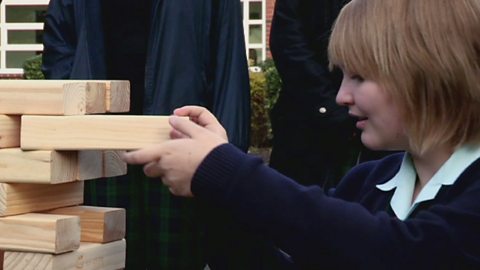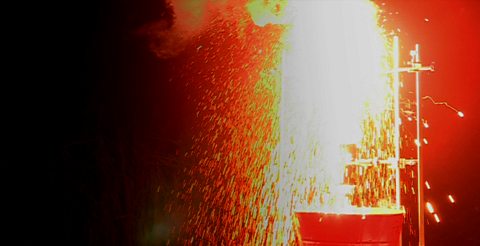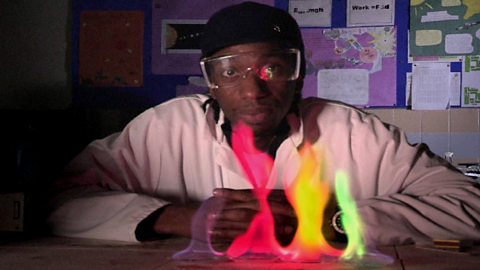Jon Chase demonstrates how electromagnetic waves are used in communication using an infra-red remote control and an outside TV broadcast.
He discusses how television broadcast uses microwaves to communicate between Earth and satellites in space.
Jon describes and performs a rap about the electromagnetic spectrum and the different types of waves.
This short film is from the ┤¾¤¾┤½├¢ series, Space Science Bites.
Teacher Notes
Your class could use the rap to create their own rhyme or mnemonic to remember the order of the different types of radiation in the electromagnetic spectrum.
Diagrams could be produced to explain how we can watch live sport from the other side of the world.
Students could calculate the time taken to reach Earth of a signal from an artificial satellite or from the Moon or the delay in live broadcasts.
Divide the class into groups, each of which researches the uses and or dangers of electromagnetic waves from specific parts of the spectrum.
Curriculum Notes
This short film will be relevant for teaching physics.
This topic appears in OCR, Edexcel, AQA, WJEC KS4/GCSE in England and Wales, CCEA GCSE in Northern Ireland and SQA National 4/5 in Scotland, and Cambridge IGCSE Physics.
More from Space Science Bites:
Gravity on Earth and in space. video
Jon Chase demonstrates why he would weigh more on Jupiter than on Earth.

The life cycle of stars. video
Jon Chase explains how the dust and gas released from dying stars forms new stars and solar systems using a popular game and a rap.

Nuclear fusion in stars. video
Jon Chase explains the nuclear fusion that causes stars like our sun to give out enormous heat.

The Big Bang and red shift. video
Jon Chase explains the scale of the solar system and universe using simple demonstrations.

Spectroscopy and the composition of stars. video
Jon Chase demonstrates a spectrometer made from a cardboard tube and an old CD to people in a shopping centre.

╠²